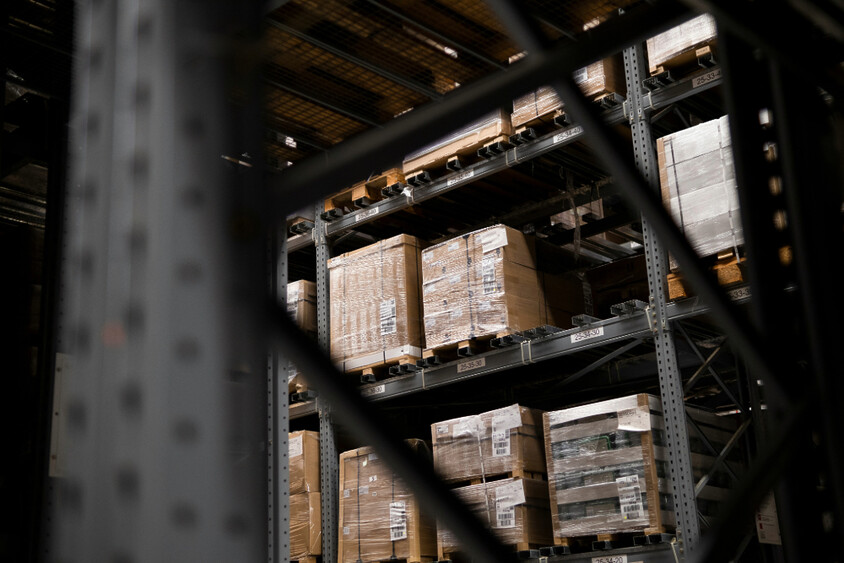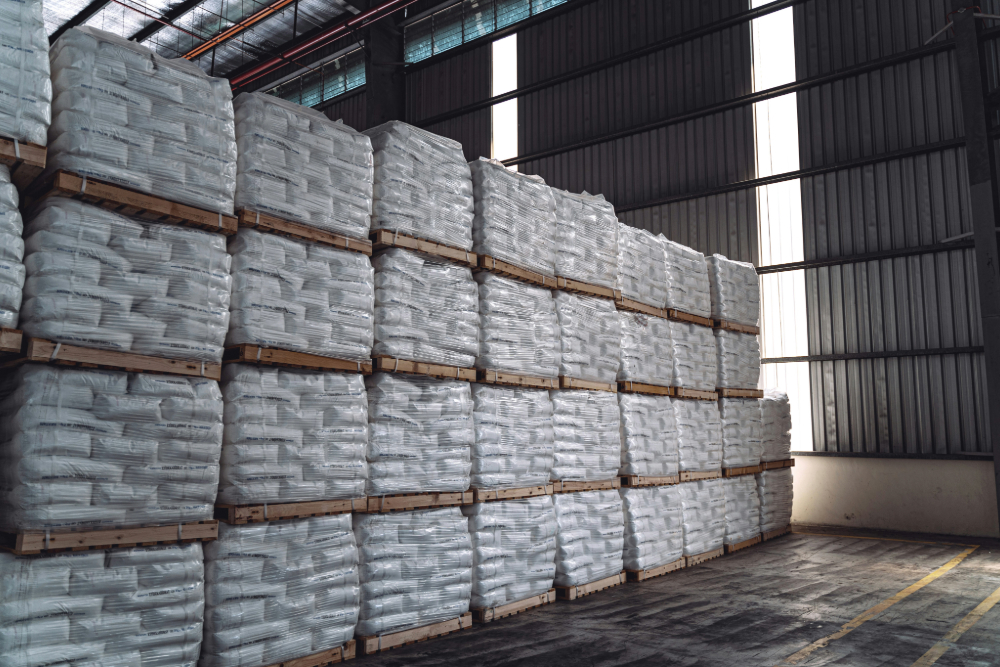Amazon Warehousing & Distribution (AWD) Explained and Debunked

In a dynamic environment like e-commerce, where fulfillment costs fluctuate heavily all the time, it always makes sense to check for options that will lower your shipping costs as well as stockout scenarios. Being well aware of these two challenges, Amazon developed a solution named Amazon Warehousing and Distribution (AWD) to address exactly this. The idea behind AWD is to provide a service to sellers that will keep storage costs low and automate necessary replenishment to FBA warehouses. AWD is especially attractive if you look at the increase in competition every year and the opportunities of selling multi-channel – an option that AWD also provides with its storage.
But how reliable is this service really? What have other sellers said so far that have used it? Are you really saving money with this solution, or are you better off looking at other providers? Find out more below.
What Is Amazon AWD?
Amazon Warehousing & Distribution (AWD) is Amazon’s storage and distribution solution which aims to simplify inventory management and reduce costs for you as a seller. Unlike Fulfillment by Amazon (FBA), which handles customer-facing fulfillment, AWD focuses on bulk, low-cost storage at Amazon-run warehouses.
A main challenge Amazon has tried to solve for the sellers with this service is going out-of-stock. AWD monitors stock in FBA centers and automatically “replenishes” your inventory when supplies run low. This ensures products stay “Prime-ready”, reduces the risk of stockouts and keeps your seller ranking squeaky clean in that regard. If you sell multi-channel, you can also use AWD for distribution. That’s right, you can tap into the same inventory pool for both Amazon and non-Amazon orders. The pricing is set up as a pay-as-you-go model. There are also options available for discounted “smart storage” rates and savings through Amazon’s partnered carriers or Amazon Global Logistics. Another advantage is the absence of seasonal surcharges, which often drive up storage costs in alternate warehouses.
What AWD Is Not
AWD by Amazon is not to be mistaken for a cheaper FBA alternative. AWD only offers bulk inventory management at cheaper prices. Items stored in AWD cannot be shipped directly to your buyers and AWD does not include picking and packing options, or customer service and returns, like FBA. Items must first be moved into FBA or dispatched through non-Amazon channels before they can reach your buyers.

How Does Amazon AWD Work?
Step 1: Ships your products in bulk to an AWD warehouse
Send your products in bulk directly to AWD Amazon warehouses and not to FBA. Take note that Amazon AWD warehouses are currently only in the U.S. Sellers from other countries can still ship products into AWD, but the inventory will be stored in U.S. facilities.
Step 2: AWD stores your items
Once received, AWD stores inventory securely with predictable, pay-as-you-go pricing. Unlike FBA, which is designed for short-term storage and quick turnover, AWD provides space for larger stockpiles without seasonal surcharges.
Step 3: Benefit from automatic replenishment to Amazon FBA when stock is low
AWD automatically replenishes your stock when it runs low in your FBA fulfillment center. This flow is powered by Amazon’s demand forecasting, helping you to avoid stockouts and stay “Prime-ready” without having to constantly monitor inventory levels.
Step 4: Option to distribute to non-Amazon channels.
Beyond Amazon sales, you can use the same AWD inventory to fulfill orders from other e-commerce channels. One convenient inventory pool, reduces the need to split stock between multiple warehouses or 3PL providers. Note that AWD for non-Amazon channels, AWD can distribute stock, but customization (such as branded packaging or special handling) is more limited compared to traditional 3PLs.
Which Products AWD Eligible?
Here’s a summary of what the Amazon AWD eligibility page says about which items can (and cannot) be part of the program:
Costs & Pricing Model
If you’re already using FBA, there’s no fee to sign up for AWD. Costs only apply once you ship inventory into Amazon’s warehousing and distribution network.
These are the AWD fees that apply to the U.S.A. only (September 2025).
| Fee Type | Rate or Tier | Notes / Conditions |
| Storage Fee (Base rate) | US$ 0.48 / cubic foot / month | The standard rate before discounts. |
| “Smart Storage” discounted storage fee | US$ 0.43 / cu ft / month (≈ 10% off base rate) | Discount applied under certain inventory level conditions. |
| Deeper discount / higher inventory discount | US$ 0.38 / cu ft / month (≈ 20% off base rate) | Available when meeting stricter inventory or usage criteria. |
| Inbound Processing Fee | US$ 1.35 per box | Charged for handling incoming boxes into AWD. |
| Discounts via Amazon Managed Service | 20% off AWD storage fees; 10% off AWD transportation (AWD → FBA) when using “Supply Chain by Amazon Managed Service” | These apply if you choose the managed service option. |
Pricing – Amazon AWD vs. FBA
As opposed to Amazon FBA, AWD calculates the fees per cubic foot, not per item. This results in the following scenarios for you as a seller.
For small, light items, AWD transport can actually be more expensive than direct FBA, this is because the per-cubic-foot model adds up quickly.
For larger/heavier or high-volume products, AWD can still win overall, because:

What Are Sellers Saying About AWD?
Seller feedback towards Amazon Warehousing & Distribution on official channels and alternative channels such as Reddit are mixed, tending towards negative. Many sellers appreciate the lower storage costs compared to renting warehouses and that AWD can automatically replenish FBA inventory. Some even report saving thousands by avoiding placement fees, cutting warehouse rent, and using cheaper pallet shipments.
On the other hand, delays are by far the biggest complaint. Many sellers report that shipments have taken weeks or even months to be checked in, creating major stockout risks – especially around Q4 when demand spikes. Several sellers note that AWD runs out of capacity regularly, refuses shipments, or struggles to move inventory to FBA fast enough. Others point out that the main USP – the auto-replenishment system – isn’t always reliable, and that additional handling and transport fees can offset savings.
A comment that summarizes the situation nicely sees AWD as promising but not fully ready for “prime time.” The service can cut costs and simplify logistics, but there is a high risk of long delays. In general, AWD is more suitable for sellers importing in large volumes (“bulk storage”) rather than smaller sellers who rely on quick turnover.
Wrapping Up
The idea of Amazon Warehousing and Distribution is forward-thinking and seller-oriented. The implementation of it is still lagging behind. Amazon promises seamless replenishment of FBA warehouses, when in reality – according to seller feedback across various channels – this feature has not consistently delivered, leaving many sellers frustrated with delays and stockouts.
At the current stage (Sept. 2025), the sellers who truly benefit are those moving inventory in bulk, as they save on long-term storage compared to traditional warehouses and FBA warehouses that are designed for fast turnover. For smaller sellers or those with fast-turnover items, however, the risks often outweigh the advantages. Until Amazon resolves the operational bottlenecks and makes replenishment as reliable as advertised, AWD remains more of a cost-saving bulk storage solution than the all-in-one fulfillment bridge it aspires to be.
FAQs
Amazon Warehousing & Distribution (AWD) is Amazon’s bulk storage and inventory distribution service. It offers low-cost, long-term storage without seasonal surcharges, automatic replenishment to FBA fulfillment centers, and the ability to supply multiple sales channels. AWD helps sellers centralize inventory, though delays and reliability issues remain a challenge.
Amazon AWD warehouses differ from FBA warehouses in purpose and function. AWD focuses on bulk, low-cost storage and inventory distribution, keeping stock ready to move into FBA or other sales channels. FBA warehouses, on the other hand, handle the customer side—picking, packing, shipping, and returns for Prime-ready orders.
AWD is best suited for high-volume or bulk sellers who need affordable long-term storage and simpler logistics. Importers shipping large containers from overseas often benefit most, since AWD cuts warehouse rental costs and streamlines replenishment. Smaller sellers with fast turnover may struggle, as delays and fees can outweigh the advantages.







